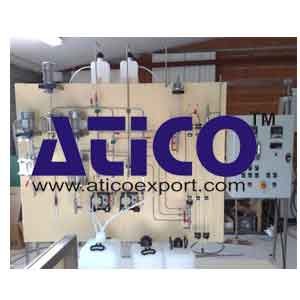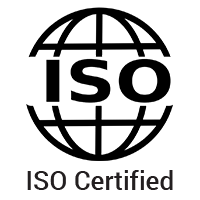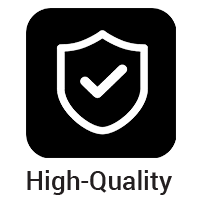Stirred Reactors Piston
Categories:Stirred Reactors Piston Specifics of the installation of Stirred Reactors Piston Continuous reactors stirred at variable speed Tubular continuous reactor with axial mixing Tubular continuous re...
Product
Description
Stirred Reactors Piston
Specifics of the installation of
Stirred Reactors Piston- Continuous reactors stirred at variable speed
- Tubular continuous reactor with axial mixing
- Tubular continuous reactor with radial mixing
- Stiff pipe work process
Principle of operation:
This reaction is an important operation in the chemical industry, making it possible to produce ever more complicated compounds from simple molecules (reagents), which are used in a growing number of industries (chemical, pharmaceutical, etc.). Understanding the laws of fluid flow in reactors (hydrodynamics) is one of the basic concepts for sizing them correctly. These are continuous reactors. Theoretically they can be of the perfectly stirred or piston variety. In reality a reactor responds to a transfer function by staying more towards one of these varieties in particular. Understanding the residence time in these reactors makes it possible to determine the type of fluid flow, by seeing how the system responds when a tracer is injected and then monitoring its concentration over time.
Teaching objectives
- Studies of the following experimental parameters :
- Study to determine the residence time.
- Study of reaction rate.
- Study of reversible and irreversible reactions.
- Calculations :
- Transfer functions.
- Conversion rate.
Technical specifications
Equipment- Plastic storage container for reagents.
- Two PTFE supply metering pumps.
- Supply of the tracer through pulses or grades.
- Two stirred cylindrical reactors, continuous and in series: borosilicate glass tanks with drain valves; 316 L stainless steel, flat bottoms and covers.
- Cylindrical continuous stirred reactor: borosilicate glass tank with drain valve; usable volume 1 liter; 316 L stainless steel, flat bottom and cover.
- Three 316 L stainless steel stirring units with variable speeds, with propeller turbines.
- A borosilicate glass tubular reactor (piston) with axial dispersion.
- A borosilicate glass tubular reactor (piston) with radial dispersion.
- Two interchangeable conductivity probes.
- 316 L stainless steel connecting pipe work.
- 304 L stainless steel tubing support structure and aluminium nut.
Instrumentation:
- Control and inspection cabinet, featuring an emergency stop, start-up buttons and the following interfaces:
- Conductivity converters.
- Multi-path numeric chart recorder.
- Stirring speed variator.
- Multi-path numeric indicator of stirring speed.
Dimensions and weight
- 2.5 m x 0.75 m x 2.5 m ~ 150 kg.
Essential requirements
- 230 V / 50 Hz / Single-phase: 1, 5 kW.
Option:
- Five temperature sensors with multi-path indicator.
quick overview :
Stirred Reactors Piston
Specifics of the installation of
Stirred Reactors Piston- Continuous reactors stirred at variable speed
- Tubular continuous reactor with axial mixing
- Tubular continuous reactor with radial mixing
- Stiff pipe work process
Principle of operation:
This reaction is an important operation in the chemical industry, making it possible to produce ever more complicated compounds from simple molecules (reagents), which are used in a growing number of industries (chemical, pharmaceutical, etc.). Understanding the laws of fluid flow in reactors (hydrodynamics) is one of the basic concepts for sizing them correctly. These are continuous reactors. Theoretically they can be of the perfectly stirred or piston variety. In reality a reactor responds to a transfer function by staying more towards one of these varieties in particular. Understanding the residence time in these reactors makes it possible to determine the type of fluid flow, by seeing how the system responds when a tracer is injected and then monitoring its concentration over time.
Teaching objectives
- Studies of the following experimental parameters :
- Study to determine the residence time.
- Study of reaction rate.
- Study of reversible and irreversible reactions.
- Calculations :
- Transfer functions.
- Conversion rate.
Technical specifications
Equipment- Plastic storage container for reagents.
- Two PTFE supply metering pumps.
- Supply of the tracer through pulses or grades.
- Two stirred cylindrical reactors, continuous and in series: borosilicate glass tanks with drain valves; 316 L stainless steel, flat bottoms and covers.
- Cylindrical continuous stirred reactor: borosilicate glass tank with drain valve; usable volume 1 liter; 316 L stainless steel, flat bottom and cover.
- Three 316 L stainless steel stirring units with variable speeds, with propeller turbines.
- A borosilicate glass tubular reactor (piston) with axial dispersion.
- A borosilicate glass tubular reactor (piston) with radial dispersion.
- Two interchangeable conductivity probes.
- 316 L stainless steel connecting pipe work.
- 304 L stainless steel tubing support structure and aluminium nut.
Instrumentation:
- Control and inspection cabinet, featuring an emergency stop, start-up buttons and the following interfaces:
- Conductivity converters.
- Multi-path numeric chart recorder.
- Stirring speed variator.
- Multi-path numeric indicator of stirring speed.
Dimensions and weight
- 2.5 m x 0.75 m x 2.5 m ~ 150 kg.
Essential requirements
- 230 V / 50 Hz / Single-phase: 1, 5 kW.
Option:
- Five temperature sensors with multi-path indicator.
Product
Reviews
add Review
reviews
No Review Yet.















Product
Reviews
add Review
reviews
No Review Yet.